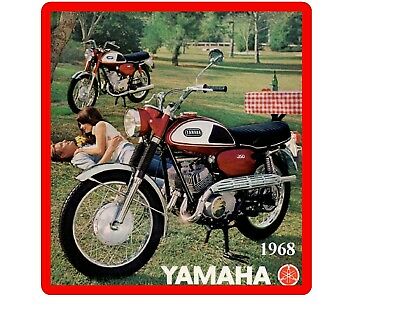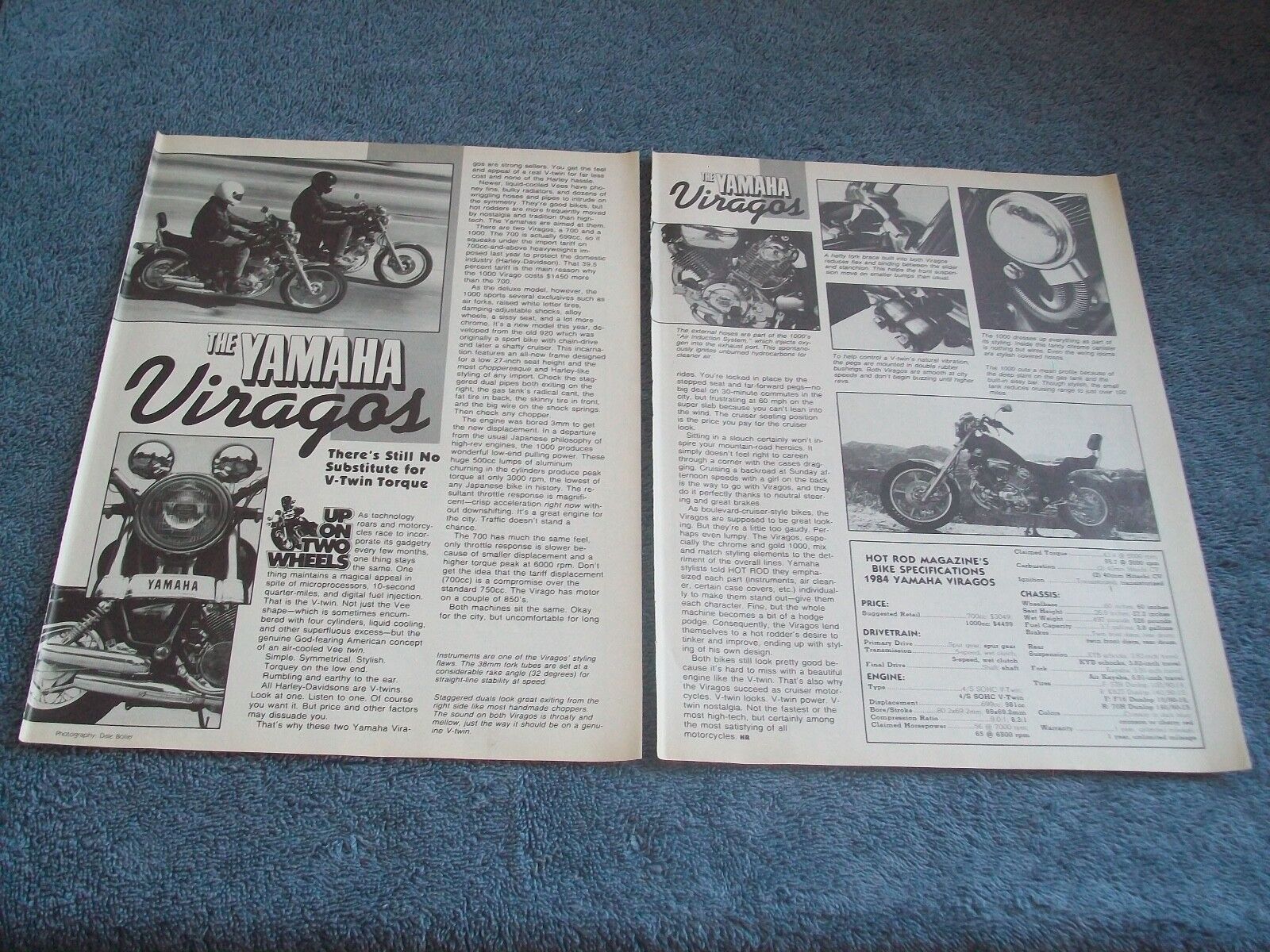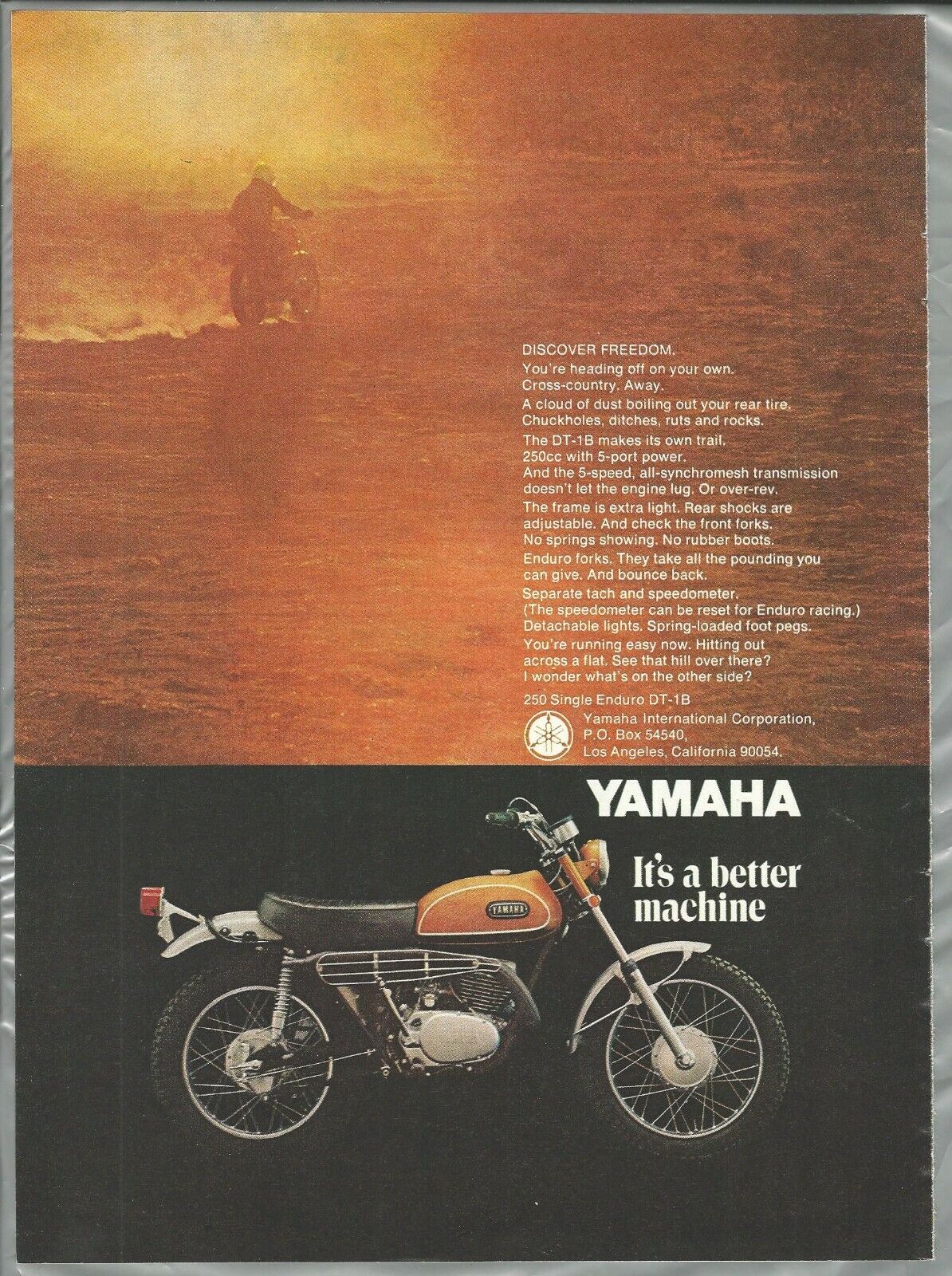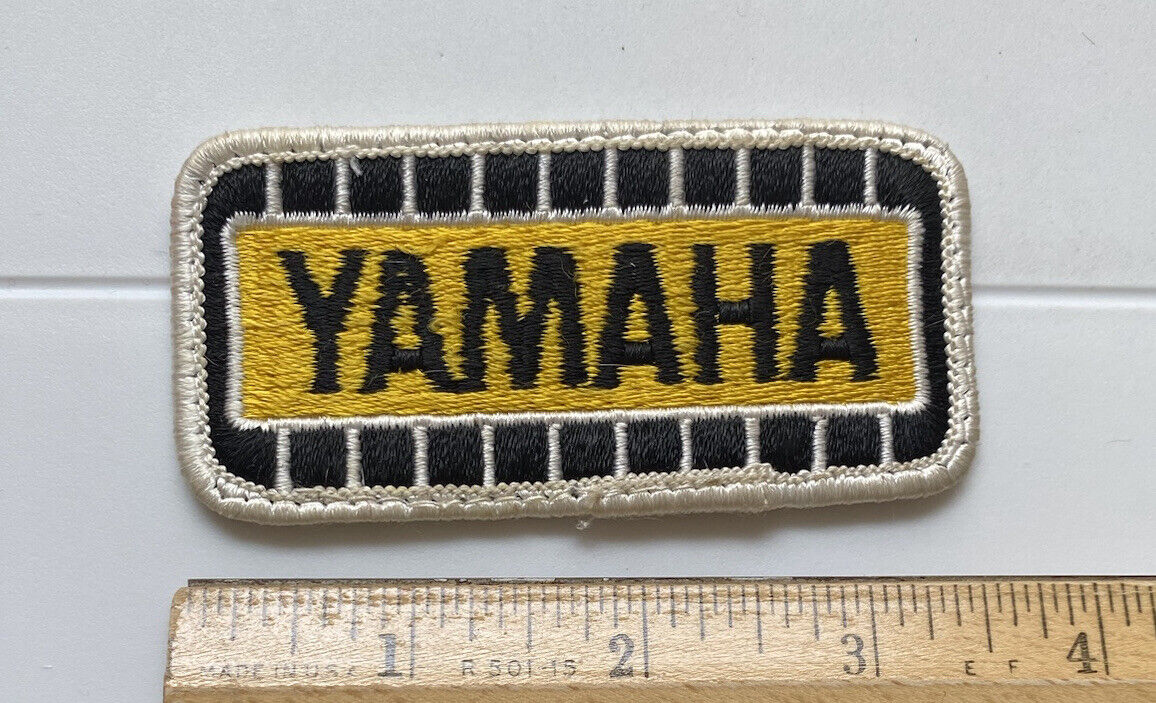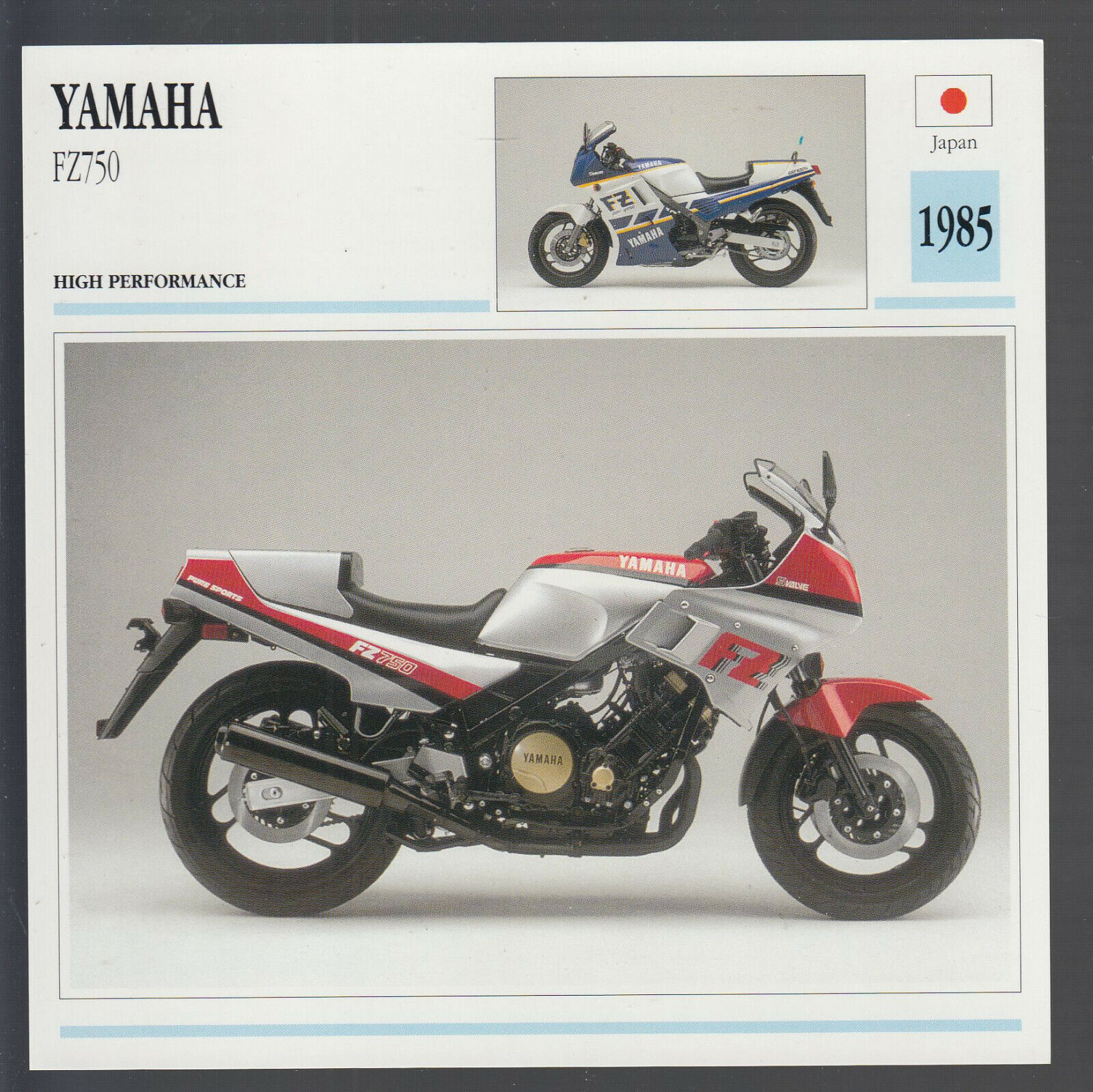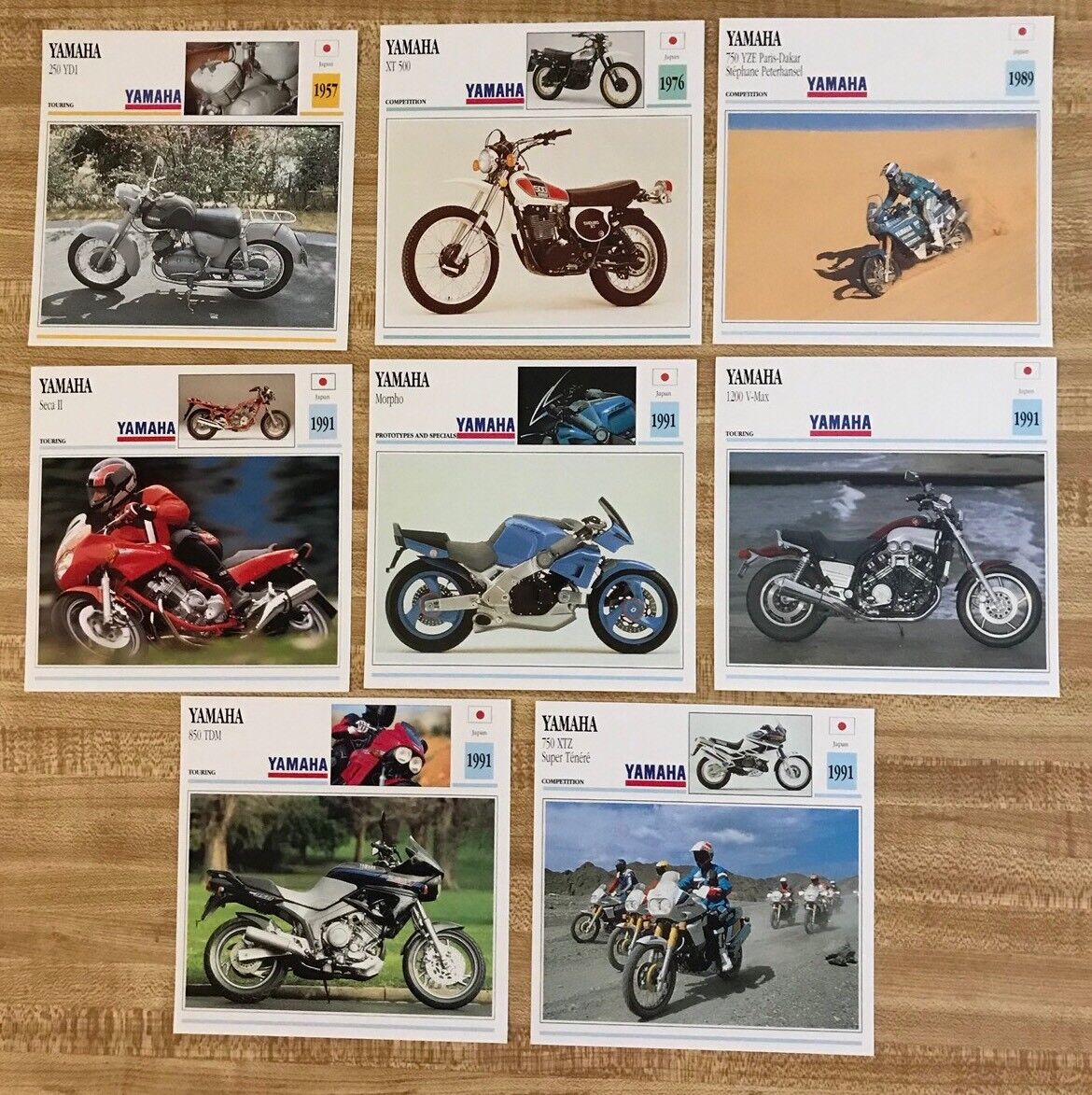-40%
1981 Yamaha IT465H Enduro Motorcycle Trail Test - 6-Page Vintage Article
$ 7.15
- Description
- Size Guide
Description
1981 Yamaha IT465H Enduro Motorcycle Trail Test - 6-Page Vintage ArticleOriginal, vintage magazine article
Page Size: Approx 8" x 11" (21 cm x 28 cm) each page
Condition: Good
TRAIL TEST:
Yamaha
IT465H
Enduro
A powerful way to make
winning a dirty habit.
BY DAVID DEWHURST
Obviously, Yamaha has never taken its
enduro bikes too seriously. Not, that
is, until the IT465. Earlier ITs all were very
capable motorcycles, but they never came
as close to the leading edge of dirt-bike
technology as the 465. Indeed, ITs tradi-
tionally were assembled from old or out-
dated YZ motocross parts. They were, in
fact, more like low-buck models: good en-
duros, but even better playbikes.
This year’s IT465 is still a dynamite
playbike, for it has even more docile power
than last year’s 425 and a more useable
chassis as well. But what this IT has that
the others never had is a more serious side.
When the trail gets tough and time is short
the IT can shift easily from play to serious
mode. It only takes a more aggressive rid-
ing style to turn the IT465 into one of the
best enduro bikes money can buy.
One reason the IT is more serious is be-
cause Yamaha is no longer bolting together
old motocross technology. Instead, the
IT465 utilized Yamaha’s latest off-road de-
signs to make it more like a YZ than any
previous model.
Everywhere you look, the IT has under-
gone major or minor changes to make it
more formidable. From the updated sus-
pension and YZ frame to a quick-detach
front light, the IT has expensive features
that help it stay well inside its enduro min-
ute. And with its awe-inspiring monster of
a motor, the IT465 has the right amount of
power for every occasion, no matter if
you’re plonking along a hillside trail or
blasting down a dusty fireroad. It can, if
you wish, be so blisteringly fast that you’ll
swear you’re on a YZ; but thanks to revised
motocross porting and a new exhaust, the
465 also serves as a forgiving playbike. The
old 425 motor never worked so perfectly at
both these extremes of performance,
which is why so many serious riders chose
to modify last year’s big YZ to enduro trim
rather than battle with an IT425.
That was fine last year, but without a
wide-ratio gearbox and the new exhaust
system, a converted YZ could never be a
match for the IT465. Sheer size alone
would seem to make the new engine better
than the 425, but with a stroke that’s a full
seven millimeters longer, the motor has a
totally different feel. Like the YZ from
which it was cloned, the IT has an unhur-
ried, almost effortless feel to it. There is no
real need to rev the motor very high, and
even less need to shift gears very often.
That’s because the first signs of usable
power show up about the time the first
signs of noise come rumbling out of the
muffler, and it just gets better from that
point onward. The motor actually behaves
like a latter-day four-stroke in that it will
plonk down to idle like the biggest thump-
ers and then rev to the limit like a two-
stroke motocrosser. And in between these
extremes the Yamaha has a torque curve as
flat as the desert to which the old 425 was
so perfectly suited. Open the throttle and
you feel as if you’ve been fired from an
enormous catapult. It's as though uncover-
ing the Mikuni’s 38mm venturi releases a
giant rubber band that launches you for-
ward in a smooth but sudden rush.
No mechanical tricks account for this
amazing spread of power. Yamaha has sim-
ply taken its latest motocross technology
and carefully adapted it to enduro use. A
look inside the engine might even convince
you that it is identical to the YZ. Certainly
the outer cases, cylinder and head are un-
changed, and there’s not even a heavier ig-
nition flywheel for a smoother spread of
power. But a few small internal changes
make all the difference.
Lowering the top edge of the exhaust
port by 2mm and narrowing the transfers
by the same amount accounts for the main
horsepower shift. And a lengthier intake
skirt gives the enduro’s piston a longer
service life than the YZ’s. Yamaha also em-
ployed a longer header pipe and a larger-
volume expansion chamber to improve
low-speed performance. Back-pressure
from a non-repackable silencer/spark ar-
restor further helps shift the power em-
phasis to the middle and lower end of the
rpm scale.
As a result of these changes, the woods
racer develops its power peak 500 rpm
lower than the YZ motocrosser. But more
importantly, even though the IT generates
fractionally less peak horsepower than the
YZ, its peak torque barely changes over a
2500-rpm spread while the YZ’s torque
peaks out rather abruptly.
To make the best use of this new stump-
pulling power, Yamaha has fitted wider
gear ratios for enduro use. First gear is
lower than the YZ’s, and its use is manda-
tory only when you play observed trials
games. Second and third are retained from
the YZ, while fourth and fifth are new,
taller gears for fast fireroading. Combined
with its smaller rear sprocket, the IT465
was able to plonk along like a true trials
bike and still scream up to 88 mph.
For most enduros you won’t need that
sort of speed. Chances are, you won’t use
first or second gears much, either. The
gearbox is a little imprecise and notchy
anyway, so it’s probably good that third
and fourth gears handle almost any situa-
tion. Having such a wide power spread
makes the IT almost like an automatic,
and that is what makes it such a pleasant
playbike as well as a good enduro mount.
You simply snick into third gear and forget
about everything but the trail ahead. You
can bounce along rocky stream beds and
climb almost impossible hills in third gear
without rowing the shift lever or bogging
the motor. The flat torque curve lets the
revs drop until you can count the power
pulses through the rubber-mounted han-
dlebars. And when the trail opens out, you
can use the motor right up to its 8000-rpm
redline. You will, admittedly, feel it tingle
through the high-mounted footpegs, but
vibration is not a real problem with the IT.
You always know it’s there, but it is only
bad when you first pump the cold motor
into life with the awkward kickstarter. As
it burbles alive on its rich mixture, the 465
shakes like a jackhammer, but once
cleared out the vibes are held at an accept-
able level.
Yamaha broke with Japanese tradition
to insure that all the IT’s amazing power
could be used. The designers opted for a
massive 17-inch IRC rear tire which, com-
bined with a conventional IRC up front,
gave exceptional straight-line stability.
Serious new suspension also helps keep
the power hooked up to the ground. The
enormous rear wheel is controlled by a
1981 YZ monoshock modified by an inter-
nal spacer that limits wheel travel to 11.4
inches. Damping is also altered for enduro
use, with softer settings and a full 28 usable
adjustment positions. Spring rate is
changed, too, with a softer initial rate, but
surprisingly, the IT’s progressively wound
spring has a higher final rate than the YZ’s.
IT and YZ also differ at the front, where
the only obvious cost-cutting on the IT
shows up. It uses last year’s 38mm moto-
cross fork instead of the new 43mm units.
Yet, when the fork was set to factory speci-
fications with stock oil and no air, the front
end was plush. The response on little
bumps was very smooth indeed, and the
fork rarely bottomed. In fact, the equally
plush rear end often bottomed at the same
time as the front over big, rolling whoops.
However, both ends always reached full
compression with a hydraulic thud rather
than a harsh metallic clang.
Yamaha seems to have bracketed the
ideal rear-suspension settings perfectly
with its 28 damping adjustments. Our 180-
pound tester used the stock spring preload
and the damping set eight clicks from the
hardest setting. That leaves lighter riders
with enough damping and spring preload
adjustments to suit almost any situation.
There are no areas where the IT suspen-
sion really falls short. Not even the older
fork is overtaxed by large rocks or tree...
16037


